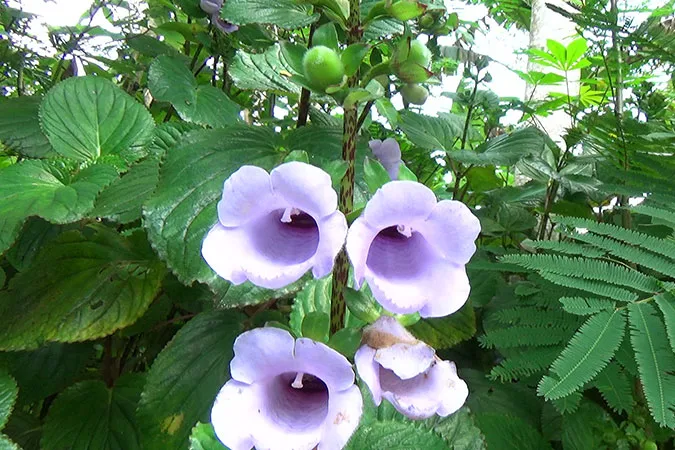Plorok (Gloxinia perennis) is a plant species in the Gesneriaceae, tropical herb, has rhizomatous, erect stem up to 60-120 cm, tubular, branched, green and red spots, grows wild in shady and humid places, rocks, river banks and slopes wet.
G. perennis has leaves arranged sitting opposite on a stalk, slightly rounded, heart-shaped base, pointed tip, serrated margin and has a thin maroon line. A bone in the middle and white with many pinnate veins.
The leaves are thick, the top surface is dark green and a yellow tinge, shiny, bumpy and sometimes have small rashes. The bottom surface is bright green and maroon.
The flower is striking, bell-shaped, about 4 cm long, horizontal, has fine hairs, is pale purple on the outside and dark purple at the base of the hallway, smells minty, clustered and solitary. The fruit is round to elliptical and contains many small seeds.
Kingdom: Plantae
Phylum: Tracheophyta
Subphylum: Angiospermae
Class: Magnoliopsida
Order: Lamiales
Family: Gesneriaceae
Subfamily: Gesnerioideae
Tribe: Gesnerieae
Subtribe: Gloxiniinae
Genus: Gloxinia
Species: Gloxinia perennis
G. perennis has leaves arranged sitting opposite on a stalk, slightly rounded, heart-shaped base, pointed tip, serrated margin and has a thin maroon line. A bone in the middle and white with many pinnate veins.
The leaves are thick, the top surface is dark green and a yellow tinge, shiny, bumpy and sometimes have small rashes. The bottom surface is bright green and maroon.
The flower is striking, bell-shaped, about 4 cm long, horizontal, has fine hairs, is pale purple on the outside and dark purple at the base of the hallway, smells minty, clustered and solitary. The fruit is round to elliptical and contains many small seeds.
Kingdom: Plantae
Phylum: Tracheophyta
Subphylum: Angiospermae
Class: Magnoliopsida
Order: Lamiales
Family: Gesneriaceae
Subfamily: Gesnerioideae
Tribe: Gesnerieae
Subtribe: Gloxiniinae
Genus: Gloxinia
Species: Gloxinia perennis
